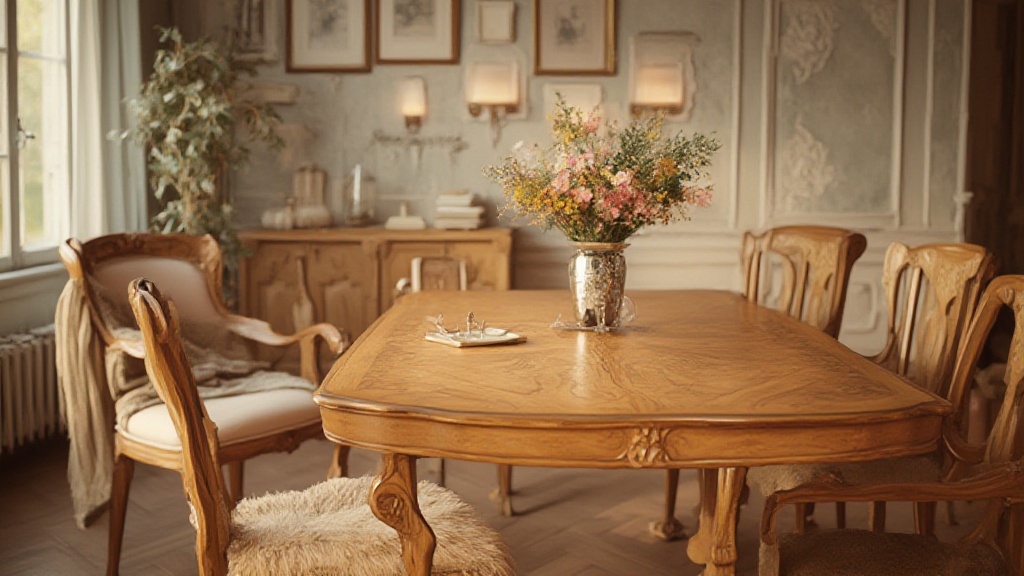Maintaining the stunning allure of oak furniture involves consistent wood maintenance. Establishing a regular maintenance schedule is essential for preserving its beautiful finish and ensuring longevity.
Regular cleaning with soft microfiber cloths effectively removes dust without scratching the surface.
Applying protective coatings can prevent water stains and surface scratches significantly.
Avoiding excessive sunlight exposure is wise, as it may lead to fading. Incorporating natural cleaners and gentle polish enhances the wood’s grain while enriching its character.
By embracing these straightforward yet effective care tips, you can enjoy your oak furniture for generations to come.
Click here to learn more about: oak furniture
Understanding Aged Weathered Finishes
The appeal of aged weathered finishes lies in their ability to evoke a sense of time-worn charm and authenticity. These techniques not only mimic the natural aging process but also enhance various surfaces, contributing to rustic decor and vintage aesthetics.
Aged weathered finishes are widely used in furniture restoration, enhancing character in wooden pieces.
Techniques such as:.
- Distressing – creating texture and depth.
- Layering – combining colors for added visual interest.
- Color washing – achieving a soft, aged appearance.
These processes generate an authentic look, making furniture pieces uniquely inviting. Aged finishes not only add a timeless aesthetic but also contribute significantly to vintage restoration efforts. Homeowners looking to incorporate rustic designs can find these techniques essential for creating warm, lived-in spaces that resonate with personal stories.
Aged weathered finishes can be applied to various materials, including wood, metal, glass, and textiles. They are particularly popular in farmhouse styles and rustic interior design. Techniques like sanding, staining, and glazing offer unique results while emphasizing craftsmanship and character. For sustainable practices, consider utilizing eco-friendly products during your restoration projects. Experimenting with different methods on sample pieces can refine your technique and develop a personal style.
Techniques For Achieving Aged Effects
Creating a captivating aged weathered finish evokes a sense of nostalgia and rustic charm. Distressing techniques are a popular choice for replicating wear; they effectively enhance the character of new furniture.
Using tools like hammers, chains, or even sandpaper can add desirable texture.
For furniture preservation enthusiasts, practicing these techniques on less visible areas first is advisable.
On the other hand, color washing offers a stunning way to create a translucent veil of paint that highlights the wood’s natural grain.
Mixing paint with a glazing medium achieves a more nuanced effect that can transform any piece. Color restoration through these methods not only enhances the aesthetic but also contributes to overall furniture longevity.
Experimenting with various techniques can lead to unique outcomes, making your projects truly one of a kind.
Tip: Explore different combinations of distressing and color washing for distinct results.
Selecting The Right Materials For Aging
Starting with quality materials plays an essential role in achieving authentic aged finishes.
Different substrates respond uniquely to aging techniques, allowing for diverse creative expressions.
Consider the following materials:.
- Wood: Softwoods like pine or oak are ideal for distressing due to their grain, providing a more genuine look.
- Metal: Options like iron or copper can yield stunning rust or patina effects that add depth and character.
- Textiles: Natural fibers such as cotton and linen can be aged beautifully using dyes, contributing to vintage aesthetics.
Choosing the right materials elevates your restoration projects and guarantees effective aging. Wood maintenance involves understanding how each type of substrate reacts to different techniques. When exploring projects, always opt for eco-friendly products to promote sustainability while achieving that perfect rustic finish.
Insight: Each material’s response to aging techniques can significantly influence the final outcome.
Aged Effects in Furniture
- Distressing techniques can increase the visual appeal of new furniture by simulating natural wear and tear.
- Color washing can enhance wood grain visibility, creating a unique and sophisticated finish.
- Using quality materials like softwoods and natural fibers ensures better results and longevity in restoration projects.
- Eco-friendly products not only support sustainability but also contribute to achieving authentic aged finishes.
Tools And Supplies For Aged Finishing
To achieve stunning aged weathered finishes, having the right tools and supplies on hand is essential. The selection of tools significantly impacts the overall quality of your finish and can enhance the rustic aesthetics you are aiming for.
Begin with high-quality brushes, as they are indispensable for applying finishes evenly.
Natural bristle brushes work best with oil-based products, delivering a smooth and consistent application.
For water-based finishes, synthetic brushes are ideal, ensuring you achieve the desired layering. Additionally, foam brushes can help create delicate and soft finishes.
Essential Supplies for Finishing
For a comprehensive approach to wood maintenance, stock up on sandpaper and sanding blocks.
Different grits allow you to effectively distress wood, adding character and depth to your project. Incorporate lint-free rags and staining cloths into your toolkit for wiping off excess finishes and ensuring a consistent appearance on your surfaces.
Prioritize your safety by keeping protective gear readily available when working with chemical finishes.
Understanding cleaning solutions is crucial in maintaining your tools and workspace.
Make sure to select eco-friendly products to align with sustainable practices and enhance furniture longevity.
By integrating these tools and supplies, you will set the foundation for successful restoration projects that can transform your furniture and home decor into authentic pieces that exude charm and history.
Aged Finishing
- High-quality brushes can significantly improve the application of finishes, leading to a more professional look.
- Using the appropriate grit of sandpaper can enhance the character of wood, making it look more authentic and aged.
- Protective gear is essential when working with chemical finishes to ensure safety and prevent health hazards.
- Eco-friendly cleaning solutions not only maintain tools but also promote sustainable practices in wood restoration.


